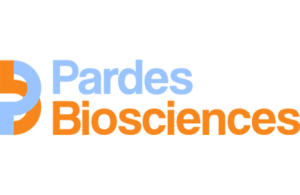 Two months after exiting stealth mode via a SPAC merger, the early-stage biopharma Pardes Biosciences (Palo Alto, California) has launched a first-in-human trial for its investigational COVID-19 pill PBI-0451.
Two months after exiting stealth mode via a SPAC merger, the early-stage biopharma Pardes Biosciences (Palo Alto, California) has launched a first-in-human trial for its investigational COVID-19 pill PBI-0451.
The origins of the company stretch back to the early days of the pandemic, said Dr. Uri Lopatin, CEO and co-founder of the company.
A visiting partner at the startup accelerator Y Combinator, Lopatin discussed the novel coronavirus with Lee Arnold, a Ph.D. chemist and former chief scientific officer of Assembly Biosciences, which Lopatin had also co-founded.
Lee remarked that the novel coronavirus bore a resemblance to SARS and MERS.
In particular, the SARS-CoV-2 main protease resembled those from other beta coronaviruses, which is one of four groupings of such spike-crowned viruses.
Standing on the shoulders of giants
Lee recalled that scientists had worked diligently on protease inhibitors targeting SARS and MERS. That work was now in the public domain.
That earlier research could provide fodder for the rapid development of an oral SARS-CoV-2 antiviral given evolutions in chemistry and the development of cloud computing and video conferencing.

Dr. Uri Lopatin
“I don’t think we would have been able to start this company 20 years ago,” Lopatin said.
Lee and Lopatin officially founded Pardes on February 29, 2020. “We founded the company online because you didn’t have to go to offices these days,” Lopatin said.
“We started work on the chemistry remotely with contract research organizations, again, something which can be done today because of the proliferation of work that can be outsourced to top-tier places around the world,” he added.
The company filed its first patents soon afterward, using prior research as inspiration.
“All chemistry is the art of standing on the shoulders of giants,” Lopatin said.
The promise of oral antivirals
Some of the first therapies to win emergency use authorization were antivirals such as Remdesivir from Gilead Sciences and antiviral monoclonal antibodies such as REGN-COV2 from Regeneron. Initially indicated as intravenous therapies, REGN-COV2 is now available via subcutaneous injection.
“What the world needs are things that you can make and deliver as a pill,” Lopatin said. “When you think about what will end the pandemic, it’s being able to have something dropped in your mailbox in a couple of hours that keeps you from getting sick or helps you get better without your having to go into the hospital where all the other sick people are.”
‘Pearls on a string’
When a coronavirus invades a cell, it injects RNA containing the coding instructions for making new viruses. The RNA from the SARS-CoV-2 virus encodes a large protein known as a polyprotein. The virus then uses the enzyme protease to catalyze the breakdown of the polyprotein. The protease cleaves the polyprotein into 16 nonstructural proteins, which can then mature into the viral replication machinery to make new viruses.
“You can think of it like pearls on a string,” Lopatin said, referring to the polyprotein.
The virus uses an enzyme known as protease to catalyze the breakdown of the polyprotein into polypeptides or amino acids.
Lopatin compares the protease enzyme to ‘scissors.’ One of the viral ‘scissors’ is called the ‘main protease’ because it is responsible for the majority of cuts, or, more formally, cleavage. “And that particular pair of scissors is what we break,” Lopatin noted.
“In an ideal world, you break the virus early on, so it cannot replicate and infect new cells, and the cell takes out the trash,” Lopatin said. “It turns out cells are good at doing that.”
A few other companies, including Merck and its partner Ridgeback Biotherapeutics, Pfizer and Shionogi are also working on oral antivirals.
A new potential weapon in the pandemic
“In the best of all possible worlds, assuming [PBI-0451] is safe and effective, all of which we have to prove, the world going forward in 2022 is very different from the world looking backward,” Lopatin said.
Antivirals could potentially not just help recently infected people get well faster, but they could also be used prophylactically if regulators authorize that use. “If you were in the same room [as someone who was infected], or on the same plane, the same elevator, or if it’s your child, parent or first-degree contacts, we could imagine an indication to treat people preventatively to keep them from getting sick,” Lopatin predicted. “As diagnostics become commodities, we could also imagine people getting treated as soon as they turn positive.”
Assuming its Phase 1 trial is successful, the company plans to test in a Phase 2/3 trial if PBI-0451 can be used therapeutically and preventatively.